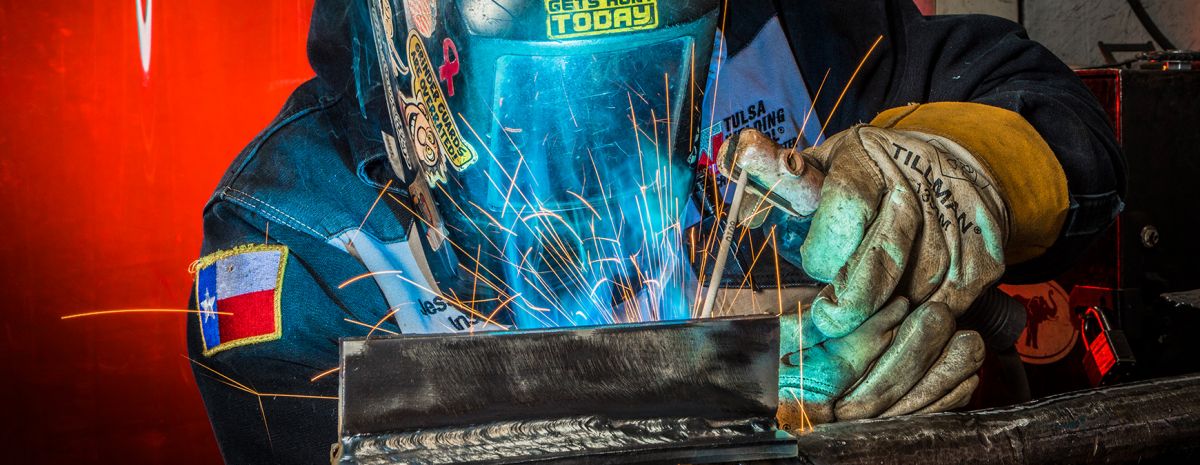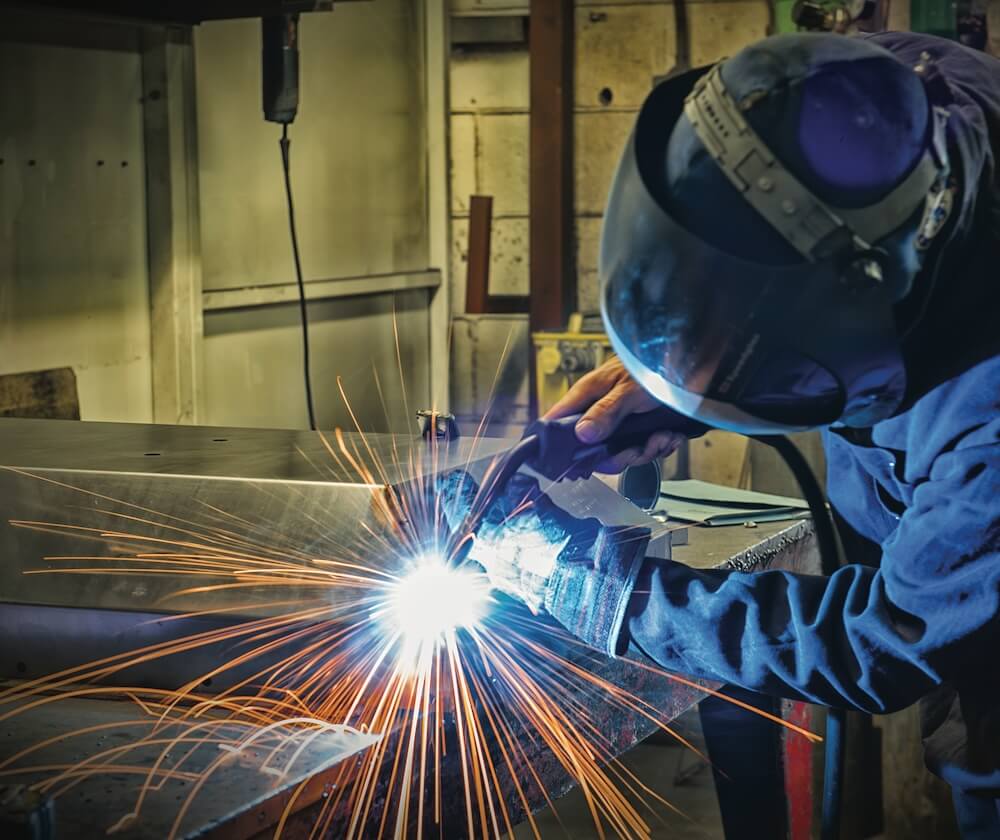Common Welding Fixing Issues and How to Address Them Successfully
Welding fixings frequently come across a series of problems that can jeopardize the integrity of the end product. Common issues include poor penetration, porosity, and misalignment, to name a few. Each defect presents distinct challenges that require specific strategies for resolution. Understanding these issues is important for welders aiming to boost their skills and outcomes. This discussion will certainly check out these common welding repair concerns and reliable approaches to address them.
Inadequate Infiltration
Insufficient penetration occurs when the weld metal falls short to completely fuse with the base material, causing weak joints and possible structural failures. This issue typically comes from insufficient warmth input, inaccurate electrode angle, or incorrect welding speed. Welders might run into insufficient infiltration because of a miscalculation of the necessary parameters for a specific product thickness or kind. Furthermore, contamination on the base product's surface can prevent efficient bonding, intensifying the trouble. To attend to inadequate infiltration, welders should assure proper setups on their tools and preserve a tidy job surface. Normal assessment of welds is advised to determine any kind of deficiencies early, enabling for prompt adjustments and the avoidance of compromised architectural honesty in welded settings up.
Porosity
Porosity is a typical defect in bonded joints that materializes as small gas bubbles caught within the weld metal. This defect can endanger the honesty of the weld, leading to minimized toughness and potential failure under anxiety. Montana Mobile Welding and Repair Belgrade Welding. Porosity normally emerges from contamination, dampness, or inappropriate welding strategies, which enable gases to escape into the molten weld pool. To deal with porosity, welders must ensure correct surface area prep work, keep a clean working environment, and make use of suitable welding parameters. In addition, selecting the right filler product and protecting gas can reduce gas entrapment. Routine inspection and testing of welds can aid recognize porosity early, guaranteeing prompt rehabilitative activities are taken, therefore maintaining the top quality and dependability of the bonded framework
Imbalance
Misalignment in welding can arise from various variables, consisting of incorrect configuration and thermal development. Recognizing the origin is crucial for reliable resolution. A number of improvement strategies are readily available to straighten parts and assure architectural stability.
Reasons for Misalignment
Welding misalignment commonly stems from a selection of underlying problems that can compromise architectural honesty. One key cause is improper fit-up of parts before welding, which can lead to spaces and unequal surfaces. Variants in thermal development during the welding procedure can also lead to distortion, specifically if the materials being signed up with have various coefficients of expansion. In addition, insufficient securing and fixturing might fail to hold parts safely in position, leading to activity during welding. Badly kept equipment, including welding machines and devices, may present variances in the weld grain, additional contributing to imbalance. Driver mistake, stemming from insufficient training or experience, can likewise play a significant function in creating misaligned welds.

Modification Strategies Available
Dealing with misalignment successfully calls for a combination of corrective methods customized to the certain problems at hand. One common method is the use of fixtures or jigs to hold components in the appropriate setting during welding, making certain consistent alignment. Additionally, pre-heating the products can help in reducing distortion and improve fit-up. For substantial imbalance, mechanical realignment strategies, such as making use of hydraulic jacks or clamps, can be utilized to fix the position prior to welding. Post-weld warmth therapy may likewise be necessary to ease stress and anxieties triggered by imbalance. Careful inspection and change throughout the setup stage can stop misalignment concerns from ending up being considerable problems, advertising a smoother welding procedure and improving overall architectural integrity.
Distortion
Distortion is a common difficulty in welding that can emerge from various aspects, including unequal heating & cooling. Recognizing the root causes of distortion is necessary for executing reliable prevention techniques. Addressing this issue not only enhances architectural integrity yet additionally improves the overall quality of the weld.
Reasons of Distortion
When subjected to the intense warmth of welding, materials often undertake changes that can bring about distortion. This phenomenon primarily emerges from thermal growth and contraction during the welding procedure. As the weld location heats up, the material broadens; upon cooling, it contracts, which can create internal stresses. Furthermore, irregular heating throughout a work surface can aggravate these tensions, causing bending or bending. The sort of product also plays a significant function; metals with varying thermal conductivity and coefficients of expansion may respond in a different way, bring about unpredictable distortions. Furthermore, bad joint style and insufficient fixturing can add to misalignment throughout welding, raising the chance of distortion. Comprehending these causes is important for reliable welding fixing and avoidance methods.
Prevention Techniques
Effective prevention strategies for distortion throughout welding concentrate on managing heat input and ensuring correct joint style. Keeping a constant warmth input assists to minimize thermal growth and contraction, which can cause distortion. Utilizing methods such as preheating the workpiece can likewise decrease the temperature gradient, promoting consistent heating. Furthermore, selecting ideal joint designs, such as T-joints or lap joints, can improve security and minimize anxiety focus. Carrying out appropriate fixturing to secure the work surfaces in position additionally help in preserving positioning throughout the welding procedure. Staggered welding sequences can distribute heat a lot more equally, avoiding local distortion. By using these methods, welders can significantly lower the probability of distortion and improve the total top quality of their welds.
Breaking
Breaking is a typical problem encountered in welding repair work, usually arising from numerous elements such as incorrect cooling rates, product selection, or insufficient joint preparation. The event of cracks can substantially endanger the honesty of the weld, resulting in possible failings throughout procedure. To resolve this concern, welders should first analyze the origin causes, making certain that materials are suitable and properly picked for the details application. Furthermore, managing the cooling rate throughout the welding process is necessary; rapid air conditioning can induce anxiety and bring about breaking. Proper joint design and preparation also add to lessening the risk. Implementing these approaches can improve weld quality and sturdiness, eventually reducing the chance of cracking in completed weldments.

Insufficient Blend
A considerable issue in welding repair work is insufficient blend, which happens when the weld metal does not sufficiently bond with the base product or previous weld passes - Montana Mobile Welding and Repair Belgrade Fabrication. This flaw can bring about weaknesses in the joint, potentially endangering the honesty of aluminum welding the welded framework. Factors contributing to insufficient fusion consist of insufficient warmth input, improper welding technique, and contamination of the surfaces being joined. To address this issue properly, welders ought to ensure correct pre-weld cleaning and surface area prep work, in addition to readjust their welding parameters to achieve adequate penetration and blend. Routine evaluation during the welding process can additionally aid recognize incomplete fusion early, allowing for prompt restorative actions to boost the overall quality of the weld
Overheating
While welding repair work can improve architectural integrity, overheating presents a significant challenge that can lead to material degradation. Too much warmth throughout welding can change the mechanical residential or commercial properties of steels, leading to minimized strength, enhanced brittleness, and bending. This phenomenon is particularly important in high-stress applications where architectural dependability is paramount. Identifying overheating can entail aesthetic assessments for discoloration or distortion, as well as keeping an eye on temperature level throughout the welding process. To alleviate the dangers linked with getting too hot, welders should employ proper methods, such as regulating heat input, changing traveling speed, and using ideal filler materials. In addition, carrying out pre- and post-weld heat treatments can assist restore material residential or commercial properties and enhance the overall quality of the repair work, making sure long-term performance and safety and security.
Regularly Asked Questions
What Are the Usual Indications of a Welding Flaw?

How Can I Examine My Welds for High quality?
To examine welds for top quality, one can utilize aesthetic examinations, ultrasonic screening, and radiographic methods. Each method assures structural stability, recognizes problems, and validates adherence to specified standards, inevitably enhancing the integrity of the welded joints.
What Safety and security Preventative Measures Should I Take While Welding?
When welding, one need to focus on safety by putting on proper personal safety equipment, making sure appropriate air flow, protecting combustible products away, keeping a clean workspace, and knowing environments to prevent injuries and accidents.
Can I Fix a Weld Without Redesigning the Entire Joint?
Fixing a weld without redoing the entire joint is possible, relying on the damages (Montana Mobile Welding and Repair Belgrade). Methods such as grinding, adding filler material, or utilizing a welding process can effectively deal with details imperfections while preserving the surrounding structure
What Tools Are Important for Effective Welding Services?
Vital devices for efficient welding repairs consist of a welding equipment, wire brush, mill, protective gear, clamps, and filler materials. Each tool plays an essential duty in ensuring high quality and safety and security during the repair procedure. Porosity typically occurs from contamination, wetness, or improper welding methods, which allow gases to escape into click now the molten weld pool. Improperly kept equipment, consisting of welding devices and devices, may introduce inconsistencies in the weld grain, additional contributing to imbalance. When subjected to the intense warm of welding, products typically go through modifications that can lead to distortion. Splitting is a common issue experienced in welding repair work, usually resulting from different elements such as inappropriate air conditioning prices, product choice, or poor joint prep work. A substantial issue in welding repairs is insufficient Discover More fusion, which happens when the weld metal does not properly bond with the base material or previous weld passes.